George Soros. Julian Robertson. Michael Steinhardt. Stanley Druckenmiller. Louis Bacon. Paul Tudor Jones II. Bruce Kovner. Arthur Samberg. These are the luminaries of the hedge-fund industry. None of them show up in what follows, however, as they’ve got nothing left to prove. Instead, we rank today’s best hedge-fund managers in six categories, based on a poll of ten industry insiders. Five are hedge-fund managers themselves. Two work with hedge funds in their positions at major investment banks. One invests in them. And two—the only ones who didn’t request anonymity—are journalists (Rich Blake of Trader Monthly and Michelle Celarier of Absolute Return). Three of our eight anonymous panelists agreed to provide additional thoughts on the managers in the following pages. Behold the new Establishment.

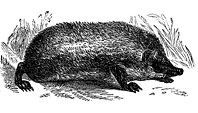
Steve Cohen
SAC Capital Advisors
Size: $12 billion
Style: Trader
Location: Stamford, Conn.
Most talked-about hedge-fund manager. Lives in a 32,000-square-foot house on a fourteen-acre estate in Greenwich. Is building what could be the great contemporary-art collection of our time. Recently purchased Willem de Kooning’s Police Gazette from David Geffen for $63.5 million. Net worth estimated at $3 billion.
Old Hand: “Came out of nowhere. He’s a terrific trader, and very intense.”
Hedge-Fund Investor: “The next wave of stars in the hedge-fund world will be those portfolio managers who come out from under Cohen’s wing.”
Young Buck: “Likely the largest trader by volume in the world. And most of the assets of the firm are his own!”
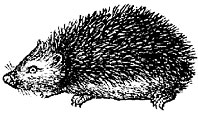
Stephen Feinberg
Cerberus Capital
Size: $19.15 billion
Style: Distressed investor
Location: Manhattan
Worked at Drexel Burnham Lambert in the Milken era. King of the vulture investors—currently sniffing around car-company wrecks in Detroit. Likes Republicans: Dan Quayle is on Cerberus team; former Treasury secretary John Snow is chairman.
Old Hand: “One of the great activists.”
Hedge-Fund Investor: “A quiet, almost antisocial guy who is a machine at investing. He’s morphing [Cerberus] from being a distressed hedge fund into almost a buyout firm.”
Young Buck: “The top name in distressed, middle-market, and private deals.”
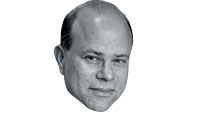
David Tepper
Appaloosa Management
Size: $5.3 billion
Style: Distressed investor
Location: Chatham, N.J.
Ran the junk-bond desk at Goldman. Joined ever-growing roster of ex-Goldmanites after founding Appaloosa in 1993. Like Cerberus, lurking around automotive industry. Worked with Cerberus on the Delphi automotive deal. Estimated net worth of $1.5 billion.
Old Hand: “As much an activist investor as a distressed one.”
Hedge-Fund Investor: “Great numbers, but very volatile. He gave so much money to the business school at Carnegie Mellon that they named it after him.”
Young Buck: “The preeminent distressed investor of the past ten years.”
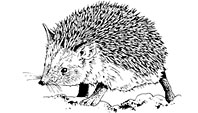
Eddie Lampert
ESL Investments
Size: $18 billion
Style: Stock picker
Location: Greenwich, Conn.
Once kidnapped. Called greatest investor of his generation. A leader among activists, he focuses on retail, and owns Sears (which owns Kmart) and AutoNation. With estimated net worth of $3.8 billion, the richest man in Connecticut, which is saying something.
Old Hand: “Lampert gets his fingernails dirty by managing the companies he invests in. He’s got no known hobbies, but he’s a terrific guy.”
Hedge-Fund Investor: “He’s turning Sears into the next Berkshire Hathaway. And he’s becoming the next Warren Buffett in the process.”
Young Buck: “Takes highly concentrated control positions in the companies he invests in.”
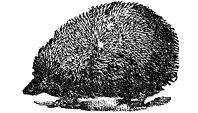
Kenneth Griffin
Citadel Investment Group
Size: $13.5 billion
Style: Trader
Location: Chicago
Used to be one of the most secretive guys. But since he decided to raise money for his firm by selling bonds last year, he’s warmed to the press, which happened to notice that Griffin took big profits in last year’s Amaranth meltdown. Purchased Jasper Johns’s False Start from David Geffen for $80 million. Net worth estimated at $1.7 billion.
Old Hand: “Griffin started trading in his Harvard dorm room at Cabot House.”
Hedge-Fund Investor: “He got married at Versailles.”
Young Buck: “A tough boss with high expectations.”

Michael Novogratz
Fortress Investment Group
Size: $4.6 billion
Style: Trader
Location: Manhattan
A president of Fortress, Novogratz cashed in with colleagues Peter Briger and Wesley Edens when the firm went public earlier this year. Like many on these lists, he got his start at Goldman Sachs. Was a helicopter pilot in the U.S. Army. Net worth estimated at $2.3 billion.
Young Buck: “Gotta love that Fortress stock price.”

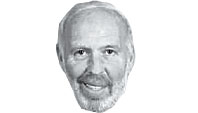
James Simons
Renaissance Technologies
Size: $24 billion
Style: Quantitative investor
Location: East Setauket, N.Y.
Former math professor is king of the “black box” investors—funds that use top-secret algorithms and invest largely by computer. Shocked peers when he set a target of $100 billion for his latest fund. Charges 5 & 44, a fee structure without peer in the hedge-fund world—but nobody’s complaining. Net worth estimated at $4 billion.
Old Hand: “Simons doesn’t hire anyone who actually knows where Wall Street is. It’s all Ph.D.’s over there. They use algorithms that nobody understands but seem to work very well.”
Hedge-Fund Investor: “Along with Dalio, co-king of the quants.”
Young Buck: “Among other things, Simons is surely one of the top-paid managers over the past few years.”
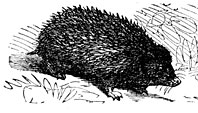
David Shaw
D.E. Shaw & Co.
Size: $26.3 billion
Style: Quantitative investor
Location: Manhattan
Helped develop Morgan Stanley’s automated trading system. Former computer-science professor left to start own fund—in the prosaic realm of statistical arbitrage—in 1988. Stepped back from active management to focus on biomolecular research, but still takes home the biggest paycheck, an estimated $500 million in 2005. Estimated net worth of $1 billion.
Old Hand: “A quiet firm that has accumulated enormous assets. He just hired Larry Summers off the beach after Harvard.”
Young Buck: “One of the largest hedge funds in the world at the moment, isn’t it?”

Clifford Asness
AQR Capital Management
Size: $9.5 billion
Style: Quantitative investor
Location: Greenwich, Conn.
Yet another in an ever-lengthening list of former Goldman Sachs prodigies to head out on his own, founded AQR in 1998 with partners David Kabiller, Robert Krail, and John Liew. At the time, the rationale was said to be Goldman’s reluctance to pay his team based on performance, a practice the firm has since partly adopted. Known as much for his writing as his investing.
Old Hand: “Built a great business. But a lot of people are puzzled by a somewhat soft performance last year.”
Hedge-Fund Investor: “They’ve brought in AMG as an investor. I think they bought 25 percent or so.”
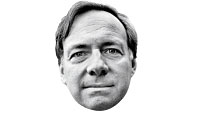
Ray Dalio
Bridgewater Associates
Size: $30.2 billion
Style: Quantitative investor
Location: Westport, Conn.
If there were a high philosopher of hedge funds, Ray Dalio would want to be that man. Prone to aphorisms such as “Bridgewater is a community in which our fates are intertwined” and “Money doesn’t bring happiness; the pursuit of excellence does.”
Old Hand: “A truly brilliant quant, but his results have been mixed.”
Hedge-Fund Investor: “Along with Simons, co-king of the quants.”
Young Buck: “Steady but unspectacular; quietly built a money-management powerhouse.”

Mark Carhart
Goldman Sachs Asset Management
Size: $32.5 billion
Style: Quantitative investor
Location: Manhattan
Former University of Chicago academic co-helmed Goldman’s flagship Global Alpha fund in 1997, after colleague Cliff Asness bolted for greener pastures. Although he got off to a good start, it’s been bumpy of late: suffered a 6 percent loss in 2006, setting tongues wagging all over Wall Street. The former high-school math-team champ has all eyes upon him in 2007.
Hedge-Fund Investor: “Whoa, did he ever have a crappy 2006.”

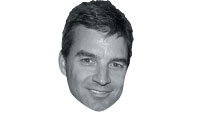
Daniel Loeb
Third Point
Size: $4.2 billion
Style: Stock picker
Location: Manhattan
Poison pen of the industry. Paid $45 million for penthouse in Robert A.M. Stern building going up at 15 Central Park West at 62nd Street. Said to enjoy yoga and surfing.
Old Hand: “A visible and outspoken activist. People think he’s self-serving, but it seems to be working for him.”
Hedge-Fund Investor: “He writes hilarious letters. Plus, you have to see that e-mail exchange he had with a potential European recruit. Just Google it.”
Young Buck: “A solid value investor who’s not afraid to shake up bad management.”
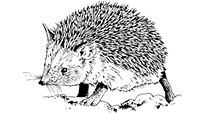
Thomas Hudson
Pirate Capital
Size: $1.1 billion
Style: Stock picker
Location: Norwalk, Conn.
Fired from Goldman over extramarital affair. Started Pirate with $1.5 million of his own money and $500,000 from parents. A vocal activist whose recent targets include Pep Boys and OSI Restaurant Partners, owner of Outback Steakhouse. Bailed too early on OSI.
Hedge-Fund Investor: “This ship might be sinking.”

Israel Englander
Millennium Management
Size: $8.6 billion
Style: Trader
Location: New York
A donor to Jewish causes. Also a donor to the Securities and Exchange Commission, to which his firm paid $180 million to settle market timing charges, $30 million of which came out of his own pocket.
Young Buck: “He got snared in the mutual-fund scandal pretty badly.”

Warren Lichtenstein
Steel Partners
Size: $3.9 billion
Style: Stock picker
Location: Manhattan
Activist investor focused on U.S. and Japan. Attempted largest hostile takeover attempt in Korean history when he went after tobacco maker KT&G with idol Carl Icahn. Currently needling Japan’s Sapporo Holdings, known to sushi lovers the world over.
Old Hand: “Another activist, but his deal with BKF I don’t think worked too well. Still, he has number of good operations.”
Hedge-Fund Investor: “An early practitioner of activism who has exported his approach to Japan and now the rest of Asia.”
Young Buck: “Not afraid to sue or be sued.”
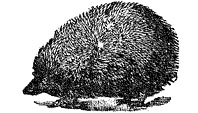
Barry Rosenstein
JANA Partners
Size: $5.8 billion
Style: Stock picker
Location: San Francisco
Onetime Merrill Lynch investment banker. (What? Not from Goldman?) Partially paralyzed in windsurfing accident, credits recovery to yoga. An activist investor of the vocal sort, thought to be as obnoxious as Daniel Loeb when going after wayward executives such as those at Kerr-McGee.
Old Hand: “A real activist. And a smart guy to boot.”
Young Buck: “Impressive returns.”


Richard Chilton
Chilton Investment Company
Size: $4.3 billion
Style: Stock picker
Location: Stamford, Conn.
A founder of the Greenwich hedge-fund scene. Sits on the board of the Metropolitan Museum of Art. Big fan of American furniture and the Republican Party.
Old Hand: “A great example of a guy who has been able to build a terrific organization as well as a good fund. Plus he’s got terrific kids.”
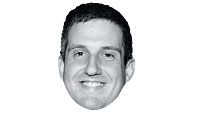
Larry Robbins
Glenview Capital Management
Size: $6.1 billion
Style: Stock picker
Location: Manhattan
Used to work for Leon Cooperman’s Omega Advisors. Nicknamed “L-train.” Onetime horse bettor.
Old Hand: “Not such a great year last year, but he’s like buyout legend Leon Cooperman. He’s totally monomaniacal about his business.”
Hedge-Fund Investor: “A big contributor to a number of causes.”
Young Buck: “Hotshot who utilizes a variety of strategies.”
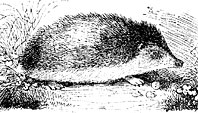
Richard Perry
Perry Capital
Size: $12.34 billion
Style: Trader
Location: Manhattan
Perry’s wife is very active in Democratic fund-raising circles; she donated more than $1 million over the last three election cycles. One of many top hedge-fund managers to come out of Goldman Sachs, Perry is pals with Eddie Lampert. Caught up in SEC investigation owing to questionable moves with stake in King Pharmaceuticals. Once owned FTD Group, the flower people.
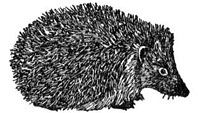
Lief Rosenblatt
Satellite Asset Management
Size: $5.4 billion
Style: Trader
Location: Manhattan
Former George Soros underling. Rhodes scholar. Stays far out of the limelight.
Old Hand: “A great arbitrageur who learned under Soros. He doesn’t seem that interested in growing quickly, and seems more focused on turning a good living.”
Young Buck: “On every charitable or cultural board.”

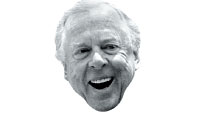
T. Boone Pickens
BP Capital Management
Size: $2.5 billion
Style: Trader
Location: Dallas
Straight-up bullish oil bets have made him a fortune. Huge philanthropist to boot, donating more than $200 million in 2005. Estimated net worth of $2.5 billion.
Old Hand: “Grew up in the energy business. Used to make his money in energy through companies; now he’s in hedge funds.”
Young Buck: “Pickens makes huge bets. Has nearly lost all of his money several times.”
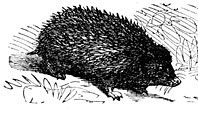
Timothy Barakett
Atticus Capital
Size: $14 billion
Style: Stock picker
Location: Manhattan
Once turned down a chance to play for the New Jersey Devils. Longtime focus on consolidation of global stock exchanges, including NYSE, Euronext, and Deutsche Boerse.
Old Hand: “Clearly a great global stock picker.”
Young Buck: “Something obviously runs in the family. His brother Brett also runs a hedge fund, Tremblant Capital.”
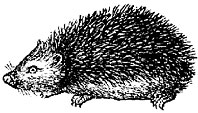
Stephen Mandel
Lone Pine Capital
Size: $7.94 billion
Style: Stock picker
Location: Greenwich, Conn.
Most successful of Julian Robertson’s “Tiger Cubs.” One of his best picks of late has been Google. One of many successful hedge-fund managers to have come out of Goldman Sachs.
Old Hand: “The team to beat. A quiet and closed guy, he runs probably the best organization in the industry. If you’re looking for a firm that’s likely to succeed its founder and keep on thriving, this is the best example.”
Young Buck: “His personal earnings are $250 million a year.”
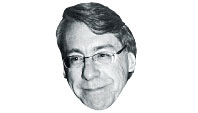
James Chanos
Kynikos Associates
Size: $3 billion
Style: Stock picker
Location: Manhattan
One of few short sellers to escape the nineties bull market alive. Called Enron early, and made Fortune’s Bethany McLean a star by telling her. Made his own fortune in the process.
Old Hand: “Clearly the dean of short sellers. He’s a deep thinker, not a trader.”
Young Buck: “Top, pure short investor of the past decade. He predicted Enron, for God’s sake.”

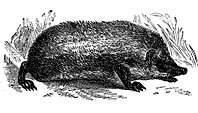
Chase Coleman
Tiger Global Management
Size: $3 billion
Style: Stock picker
Location: Manhattan
Tiger Cub. Also a descendant of Peter Stuyvesant, the man who among other things built the actual “wall” in Wall Street. Likes small-cap stocks.
Old Hand: “A good global investor who is developing his business slowly and methodically.”
Hedge-Fund Investor: “He’s doing more than just technology now, some sort of venture-capital effort.”
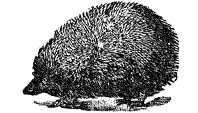
William von Mueffling
Cantillon Capital Management
Size: $8.1 billion
Style: Stock picker
Location: Manhattan
Made name at Lazard investing in tech and telecom, and credited with putting the bank’s hedge-fund business on the map. Quit in 2003. Collects black-and-white photographs and is on the board of the International Center of Photography.
Hedge-Fund Investor: “He left Lazard high and dry. They should have tried harder to keep him.”
Young Buck: “A rising star, growing fast.”
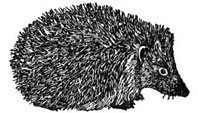
John Arnold
Centaurus Energy
Size: $3 billion
Style: Trader
Location: Houston
Former Enron trader whose firm was accused of manipulating energy markets by U.S. senator Dianne Feinstein. Hired many employees out of Enron ashes. Expertise in natural gas futures. Said to have been a big beneficiary of Amaranth blow-up.
Hedge-Fund Investor: “The dude just got married on Richard Branson’s private island. He also happens to be an awesome energy trader.”
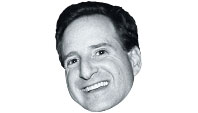
Eric Mindich
Eton Park Capital
Size: $6.2 billion
Style: Trader
Location: Manhattan
Youngest partner in the history of Goldman. One of many to leave the fold and start a hedge fund. Sterling reputation earned in Goldman’s risk-arbitrage department. At risk if he doesn’t put up big numbers soon.
Old Hand: “It’s too soon to tell with Mindich. He started big, but his recent results haven’t been great. Everybody is wondering what’s up.”
Young Buck: “Largest new launch of a hedge fund in history at the time.”
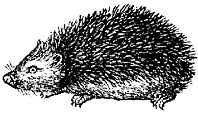
Peter Thiel
Clarium Capital Management
Size: $1.9 billion
Style: Trader
Location: San Francisco
Rare hedge fund that doesn’t charge fixed management fee, taking only 25 percent of profits. Co-founded PayPal. Libertarian who founded the Stanford Review. Side job as venture capitalist with investments in Friendster, Facebook, and LinkedIn. Executive-produced the movie of Christopher Buckley’s Thank You for Smoking.
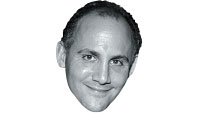
David Ganek
Level Global Investors
Size: N/A
Style: Stock picker
Location: Greenwich, Conn.
One of the first SAC employees to head out on his own. Known as much for art collection as he is for investing. Big fan of Jeff Koons. Owns an apartment in 740 Park.
Old Hand: “Good money manager with solid results.”
Young Buck: “Shares a fondness for art with former boss Stevie Cohen.”
STYLE GUIDE
Trader: Seeks to exploit short-term volatility in the price of a security. The trader need not have an opinion on the merits of a company whose stock he trades, or the appropriateness of a particular exchange rate—just an opinion on the short-term direction of the securities.
Stock Picker: Differs from the trader in that stock pickers tend to analyze a company’s (or an industry’s or a country’s) fundamental business and make informed bets on their future direction. Tends to hold positions longer than a trader. Activist stock pickers try to personally intervene in company affairs. CEOs hate them.
Distressed Investor: Buys and sells the securities of companies in trouble, where there tends to be larger-than-usual differences of opinion over the relative merits of a stock or bond. Can also become an activist and attempt to take control of a company by buying a majority of its equity or, in bankruptcy, its debt.
Quantitative Investor: Generally relies on software-driven models that analyze historical trading patterns to inform current investment decisions, seek out price inefficiencies, or crunch financial-statement data in order to determine a theoretical price. It’s all numbers, no guts.
Hedge-fun-size estimates courtesy of Absolute Return magazine. Income estimates from Trader Monthly.